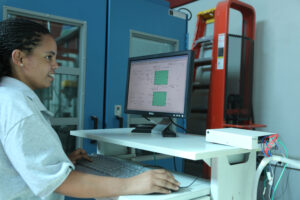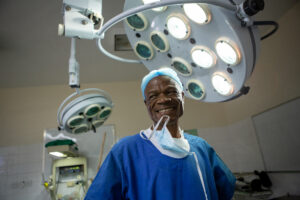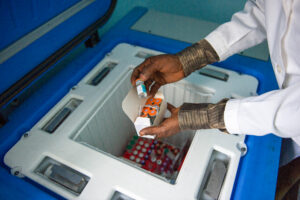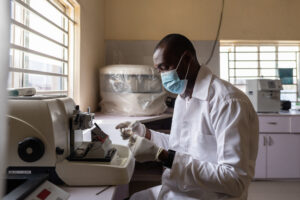Health-care facility electrification is a critical step toward enhancing medical care and saving lives. Reliable electricity not only supports essential medical equipment but also improves various aspects of healthcare delivery. The World Health Organization (WHO) publication, Energizing health: accelerating electricity access in health-care facilities, provides a comprehensive update on the status and key actions needed to provide reliable, modern energy to healthcare facilities in low- and middle-income countries and mitigate the impact of climate change on public health.
Key measures for resilience include enhancing health systems, promoting sustainable practices, and addressing specific health risks exacerbated by air pollution and climate change. Energy is a key factor in the resilience of health systems and a country’s ability to respond and mitigate emergencies. Here are five key ways health-care facility electrification can make a significant impact.
1. Reliable Medical Equipment Operation

Modern healthcare relies heavily on advanced medical equipment for diagnostics, treatment, and patient monitoring. Equipment such as incubators, ventilators, and diagnostic machines are essential for providing high-quality care, particularly in emergency and critical care settings.
Electrification ensures that this critical equipment operates reliably and continuously. Without stable electricity, devices may fail, leading to adverse patient outcomes. For example, incubators are vital for neonatal care, maintaining the necessary temperature and humidity for premature or sick newborns. A power failure could lead to life-threatening conditions for these infants.
In many parts of Sub-Saharan Africa, neonatal mortality rates are high due to inadequate healthcare infrastructure. Electrifying healthcare facilities in these regions has proven to improve neonatal care significantly. For instance, in Kenya, the health-care facility electrification of rural clinics has enabled the use of incubators and other essential neonatal equipment, resulting in a notable decrease in infant mortality rates.
One of the main challenges is the unstable electricity supply in rural and remote areas. Solutions include using solar power systems and battery backups to ensure continuous power supply. Additionally, governments and NGOs can invest in training healthcare workers to maintain and troubleshoot electrical equipment.
Reliable electricity for medical equipment operation is a cornerstone of effective healthcare. Ensuring continuous power supply to healthcare facilities can significantly improve patient care and outcomes, particularly in emergency situations.
2. Safe Childbirth and Maternal Care

Adequate lighting is crucial during childbirth to ensure safe deliveries. Proper illumination helps healthcare workers perform procedures accurately, reducing the risk of complications for both the mother and the newborn.
Electrification of healthcare facilities provides the necessary lighting for safe childbirth. In many developing regions, women give birth in facilities without adequate lighting, leading to increased risks of maternal and neonatal mortality. Electrified facilities can offer well-lit delivery rooms, operating theaters, and recovery areas, enhancing the safety and quality of maternal care.
For example, India has made significant strides in improving maternal health by electrifying rural healthcare centers. The National Rural Health Mission (NRHM) has focused on providing reliable electricity to these centers, ensuring that childbirth occurs in safe, well-lit environments. This initiative has contributed to a substantial reduction in maternal and neonatal mortality rates across the country.
The main challenge in many regions is the lack of infrastructure to support reliable health-care facility electrification. Solar power and other renewable energy sources can be effective solutions, providing a sustainable and continuous power supply. Additionally, partnerships with international organizations can help fund and support electrification projects.
Ensuring safe childbirth through reliable lighting is a critical aspect of maternal care. Electrifying healthcare facilities can dramatically improve maternal and neonatal health outcomes, making childbirth safer for millions of women worldwide.
3. Vaccine Storage and Cold Chain Maintenance

Vaccines are sensitive biological products that require specific temperature conditions to remain effective. The cold chain is a temperature-controlled supply chain critical for storing and transporting vaccines from the manufacturer to the point of use.
Health-care facility electrification ensures facilities can maintain the cold chain for vaccines. Reliable electricity is necessary to power refrigerators and freezers that store vaccines at the required temperatures. Without proper refrigeration, vaccines can become ineffective, leading to increased susceptibility to preventable diseases.
For example, Nigeria has made significant progress in its polio eradication efforts by ensuring reliable electricity for vaccine storage in healthcare facilities. The government, in collaboration with international partners, has invested in solar-powered refrigerators to maintain the cold chain in remote areas. This has ensured that vaccines remain effective, contributing to the near-eradication of polio in the country.
Maintaining the cold chain in remote and rural areas can be challenging due to unreliable electricity and logistical issues. Investing in solar-powered refrigeration systems and training healthcare workers on proper vaccine storage practices are effective solutions to these challenges.
Maintaining an effective cold chain for vaccines is crucial for preventing diseases and outbreaks. Electrification of healthcare facilities ensures that vaccines are stored properly, safeguarding public health.
4. Enhanced Diagnostic Capabilities

Accurate and timely diagnosis is essential for effective medical treatment. Diagnostic tools such as X-ray machines, ultrasound scanners, and laboratory equipment play a vital role in identifying diseases and conditions early, allowing for prompt treatment.
Electrified healthcare facilities can support the use of advanced diagnostic tools, enhancing the ability to diagnose diseases accurately and quickly. This leads to better patient outcomes as healthcare providers can make informed decisions and initiate appropriate treatments without delay.
In Ethiopia, health-care facility electrification has significantly improved the diagnosis and treatment of tuberculosis (TB). With reliable electricity, healthcare centers can use modern diagnostic tools such as GeneXpert machines, which provide rapid and accurate TB diagnosis. This has led to timely treatment and a reduction in TB-related mortality.
The primary challenge is the lack of reliable electricity in remote healthcare facilities. Investing in decentralized renewable energy sources such as solar power can provide the necessary electricity for diagnostic equipment. Additionally, training healthcare workers on the use and maintenance of diagnostic tools is essential.
Enhanced diagnostic capabilities through electrification improve health-care delivery and patient outcomes. Ensuring that health-care facilities have reliable electricity to power diagnostic tools is crucial for timely and accurate disease diagnosis.
5. Improved Communication and Information Systems

Effective communication and information systems are vital for coordinating healthcare services, conducting remote consultations, and managing patient records. These systems rely on reliable electricity to function properly.
Therefore, health-care facility electrification allows for the use of communication tools such as telemedicine, electronic health records (EHRs), and internet access. These tools facilitate better coordination of healthcare services, allow for remote consultations with specialists, and improve the management and accessibility of patient records.
In rural South Africa, the electrification of healthcare facilities has enabled the use of telemedicine, improving access to specialized medical care. Through telemedicine, healthcare providers in remote areas can consult with specialists in urban centres, enhancing the quality of care for patients in underserved regions.
One challenge is the initial cost of implementing communication and information systems. Solutions include seeking funding from international donors and government programs to improve healthcare infrastructure. Additionally, training healthcare workers to use these systems effectively is essential.
Improved communication and information systems through electrification enhance healthcare delivery and coordination. Ensuring healthcare facilities have reliable electricity to support these systems is crucial for improving overall healthcare services.
Urgent action is needed
Electrification of healthcare facilities is a vital step towards enhancing healthcare delivery and saving lives. Reliable electricity supports critical medical equipment, ensures safe childbirth, maintains the cold chain for vaccines, enhances diagnostic capabilities, and improves communication and information systems. By addressing the challenges and investing in sustainable energy solutions, we can ensure that healthcare facilities are equipped to provide high-quality care, ultimately saving lives and improving public health outcomes.

Learn more: https://www.who.int/publications/i/item/9789240066960